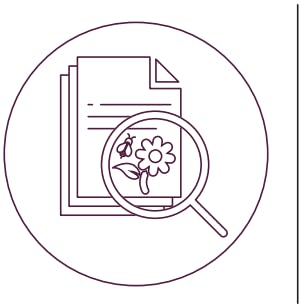4.3.1.1.5. Protecting biodiversity on operated sites
L’Oréal is committed to limiting the impact of its activity on biodiversity throughout its value chain, especially on each of the sites it operates. Projects that promote the protection or development of biodiversity were initiated on most of the sites, along with actions to raise awareness among employees. All these actions must be harmonised with the environment in which these sites are located.
In 2018, in addition to the rules laid down by L’Oréal on the use of soils (see section 4.3.1.1.2. “Managing risks and controlling the impact of sites on their environment” of this document), it was proposed that each of the sites should implement a suitable system to roll out a specific biodiversity roadmap. Partnerships with external organisations such as the French League for the Protection of Birds (Ligue pour la Protection des Oiseaux - LPO) may be established to carry out on-site biodiversity inventories and propose suitable action plans. These inventories take into account local, regional and national challenges, and cover soil permeability, the proportion and connection of green spaces, the diversity of habitats and plant populations, the number of species (flora and fauna), including protected, endangered, and invasive species. In this way, the inventories contribute towards a basis of scientific knowledge in order to define targeted biodiversity action plans, conducted with associations or local experts, inline with the ecosystem in which the sites operate. These projects may result in the transformation of available spaces on-site to promote biodiversity. They may also contribute to actions aimed at educating L’Oréal employees and local stakeholders by encouraging them to better connect with nature and thus enabling them to become key players in protecting biodiversity.
At year-end 2021, 80 biodiversity inventories were conducted in the Group, 73% of which by industrial sites.

At year-end 2021, 80 sites conducted a biodiversity inventory.
As part of the L’Oréal for the Future programme, the Group has set itself a new target: by 2030, all buildings and all industrial sites operated by the Group will have a positive impact on biodiversity compared to 2019.
A methodology for monitoring this commitment was developed in 2021 and will be rolled out to all of the Group’s sites in 2022. Becoming “net biodiversity positive” is achieved through:
- Meeting a target for the improvement of habitat and biodiversity quality: at site level, this improvement is measured using an indicator called the Site Biodiversity Score (SBS). The information required to calculate the SBS is taken from biodiversity inventories. This enables the improvement in the quality of biodiversity on a given site to be assessed and monitored; and
- Reaching a biodiversity culture threshold:: developing a biodiversity culture involves raising awareness among and training all teams at a site, incorporating biodiversity considerations into the roll-out of new projects (extending a building, etc.) and into the everyday life of the site (responsible purchasing, awareness of food waste, etc.).
In addition, L’Oréal wishes to eliminate the use of phytosanitary products (insecticides, fungicides, and herbicides) in the maintenance of green spaces, as they can have an impact on the environment and human health. Sites operated by the Group must report on whether or not these products are being used.
The Group commits to ensuring that phytosanitary products are not used on any of the sites it operates by 2030.
At the end of 2021, 143 sites, i.e. 84% of L’Oréal sites, do not or no longer use phytosanitary products to maintain green spaces.
4.3.1.1.6. Preserving resources and reducing waste on operated sites
For several years, an ambitious approach to waste optimisation that goes well beyond regulatory compliance has been implemented in the Group within the framework of the Sharing Beauty With All programme, and the L’Oréal for the Future programme is continuing this work. An ambitious challenge, in light of L’Oréal’s exacting definition of waste. Indeed, any solid discharge that is not a finished product intended for consumers is considered as waste, whatever its treatment and future recovery.
As part of the L’Oréal for the Future programme, the Group set a new target for 2030 to preserve natural resources: 100% of the waste generated on the operated sites will be recovered (reused, or recycled).
Furthermore, building on the Sharing Beauty With All programme, the Group has set itself new targets for reducing the waste it generates:
- reducing the waste production of factories and distribution centres by 30% per finished product, compared to 2019; and
- reducing the waste production of administrative sites and research centres by 30% per 100 hours worked, compared to 2019.
Finally, L’Oréal remains committed to ensuring that none of its waste is sent to landfill (without regulatory constraints).
